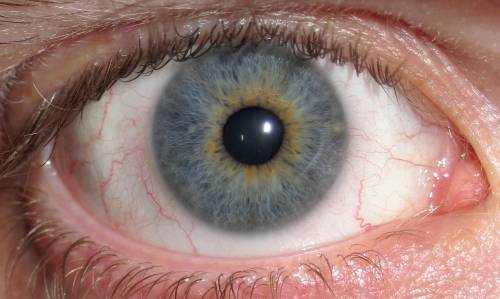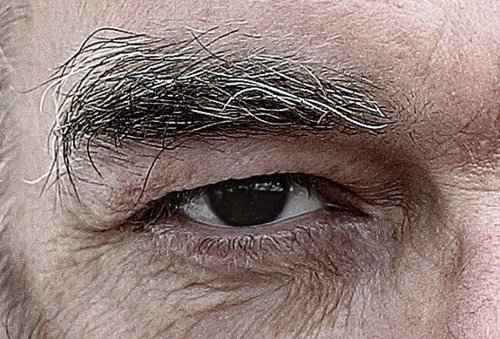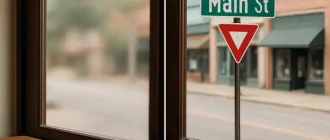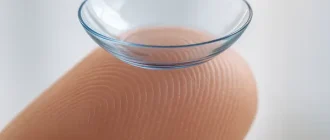The use of contact lenses for children has evolved significantly in recent years. Once considered suitable only for teenagers and adults, modern advancements have made them a viable option for younger patients as well. But what are the latest trends in pediatric contact lenses? Are they safe? And how do they compare to traditional glasses?
Annual Cost of Pediatric Contact Lenses (USD)
The chart compares the annual costs of different types of pediatric contact lenses. Scleral lenses are the most expensive option, while daily disposables are the most affordable.
When Are Contacts Recommended for Children?
Pediatric contact lenses are prescribed for various reasons, including:
- Myopia Control – Certain specialized lenses can slow the progression of nearsightedness in children.
- Example: A 9-year-old boy with rapidly worsening myopia (-1.50D per year) was prescribed Ortho-K lenses. Over three years, his progression slowed to -0.50D per year, reducing his risk of severe nearsightedness in adulthood.
- Expected Improvement: Reduced myopia progression, lower risk of high myopia complications.
- High Refractive Errors – Children with severe myopia, hyperopia, or astigmatism may benefit from contact lenses more than glasses.
- Example: A 10-year-old girl with +6.00D hyperopia struggled with thick glasses distorting her peripheral vision. Switching to contact lenses improved her visual clarity and confidence.
- Expected Improvement: Clearer vision, wider field of view, improved comfort.
- Anisometropia – A condition where each eye has a significantly different prescription, making glasses less effective.
- Example: An 11-year-old with a -4.00D difference between her eyes found glasses ineffective due to size disparities. Contact lenses balanced her vision, reducing strain and headaches.
- Expected Improvement: Better depth perception, reduced visual discomfort.
- Keratoconus and Corneal Irregularities – Some children require specialized contact lenses due to corneal disorders.
- Example: A 13-year-old boy with keratoconus experienced blurry vision with glasses. Scleral lenses provided sharper vision and better eye protection.
- Expected Improvement: Enhanced vision stability, increased comfort, reduced glare and halos.
Modern Trends in Pediatric Contact Lenses
1. Myopia Management Lenses
One of the most significant trends in pediatric contact lenses is the use of specially designed lenses to slow myopia progression. These include:
- Orthokeratology (Ortho-K): Overnight rigid lenses that temporarily reshape the cornea, reducing daytime dependence on glasses.
- Soft Multifocal Lenses: Daily or monthly lenses with concentric rings that help control myopia.
- FDA-Approved Myopia Control Lenses: Such as MiSight 1 day, which has been clinically proven to slow myopia progression.
Case Study: A 10-year-old girl from California had progressive myopia, increasing by -1.00D annually. Her optometrist prescribed MiSight 1 day lenses, and after two years, her myopia progression slowed to -0.25D per year, significantly reducing her risk of high myopia in adulthood.
Vision Improvement in Ortho-K Users (D Reduction Over Time)
| Time Period | D Reduction |
|---|---|
| 1 Month | 0.75D |
| 3 Months | 1.50D |
| 6 Months | 1.75D |
| 1 Year | 2.00D |
This chart illustrates the reduction in diopters (D) over time for Ortho-K users. The greatest improvement is seen within the first year, demonstrating the effectiveness of this vision correction method.
2. Daily Disposable Lenses for Hygiene and Safety
Single-use daily disposable lenses have become a preferred choice for children due to:
- Lower risk of infections.
- No need for cleaning or storage solutions.
- Greater convenience for parents and children alike.
Case Study: A 12-year-old boy from Texas, active in sports, struggled with foggy glasses during games. Switching to daily disposable lenses improved his vision and comfort, enhancing his performance on the field.
3. Silicone Hydrogel Lenses for Oxygen Permeability
Many modern lenses are made of silicone hydrogel, which allows more oxygen to reach the cornea. This reduces the risk of complications like dryness or corneal hypoxia.
Case Study: An 11-year-old from New York with dry eyes found standard lenses uncomfortable. Her optometrist recommended silicone hydrogel lenses, which dramatically improved her eye comfort throughout the day.
4. Hybrid and Scleral Lenses for Special Cases
For children with irregular corneas or severe conditions like keratoconus, hybrid or scleral lenses offer improved vision and comfort compared to traditional soft lenses.
Case Study: A 13-year-old from Florida diagnosed with early-stage keratoconus struggled with vision clarity using glasses. Scleral lenses provided better visual acuity and comfort, allowing her to continue daily activities without discomfort.
Safety Considerations: Are Contact Lenses Safe for Kids?
Yes, contact lenses are generally safe for children when used correctly. However, there are important factors to consider:
- Parental Supervision: Young children may need help with insertion, removal, and hygiene routines.
- Hygiene and Compliance: Proper cleaning (if using reusable lenses) is crucial to avoid infections like microbial keratitis.
- Regular Eye Exams: Pediatric patients should have frequent check-ups to monitor eye health and prescription changes.
Children Wearing Contact Lenses by Age Group (%)
| Age Group | Percentage |
|---|---|
| 6-8 Years | 5% |
| 9-11 Years | 15% |
| 12-14 Years | 35% |
| 15-17 Years | 60% |
This chart presents the percentage of children wearing contact lenses across different age groups. The data indicates a significant increase in lens usage as children grow older, with the highest adoption among teenagers aged 15-17 years.
Cost Considerations
The cost of pediatric contact lenses varies based on the type:
| Lens Type | Average Cost (Annual) |
|---|---|
| Daily Disposables | $500–$900 |
| Ortho-K Lenses | $1,000–$2,000 |
| Myopia Control Lenses | $600–$1,200 |
| Scleral Lenses | $1,500–$3,000 |
Editorial Advice
Reyus Mammadli, health care advisor, recommends that parents consult with an eye care professional before deciding on contact lenses for their child. While modern advancements have made lenses safer and more effective, proper hygiene and routine check-ups are crucial to maintaining eye health. Glasses remain a practical option, but for children with active lifestyles or specific vision needs, contacts can be a life-changing solution.





